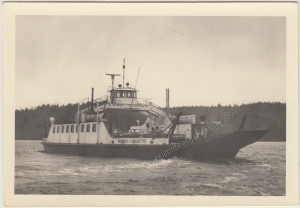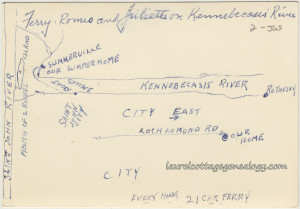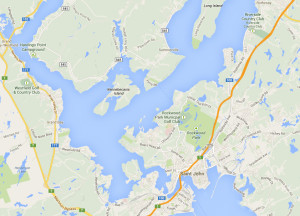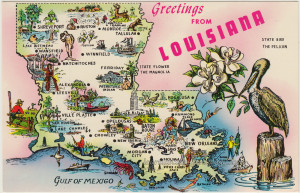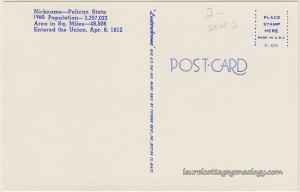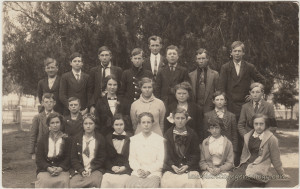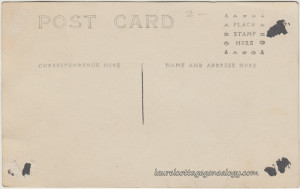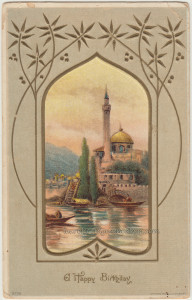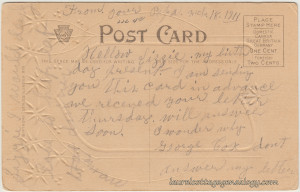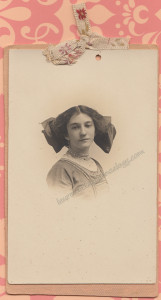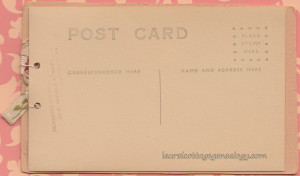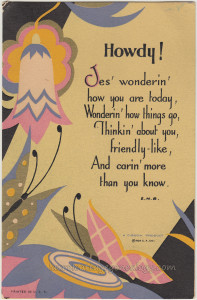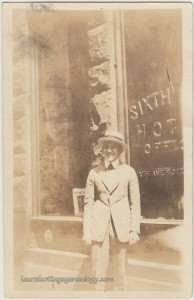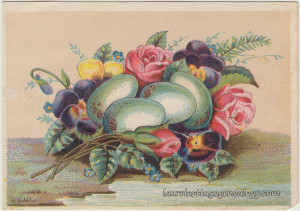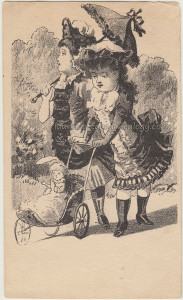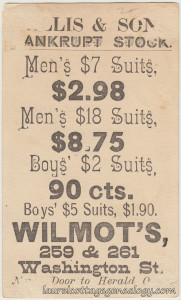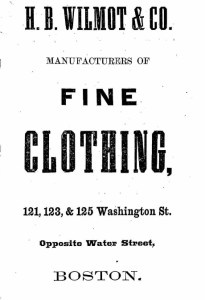Photographer, Edward Payson Butler was born in Clinton, Pennsylvania May 13, 1834, son of Hezekiah Goodwin Butler and Emily White, according to the 1879 genealogy compilation of Benjamin Cleveland and family. All seven U. S. Federal Census records, as well as one of two online California voter records indicate the year of birth as 1834, with the 1900 census showing the month as May. The 1850 census, taken in Dyberry, Wayne Co., Connecticut, shows Edward P. Butler, age 16, with parents Hezekiah Butler, born about 1800 in Connecticut and Amelia W., (Emily) born about 1801, also in CT (the middle initial W possibly standing for her maiden name of White) and sister, Mary E. Butler, born PA about 1836. This census shows the father’s occupation as Shoemaker.
A quick rundown of the rest of the census records for Edward and a couple of voter registrations are as follows: 1860 census, San Francisco, E. P. Butler, renting a furnished room, occupation “fruitirer”; 1867 California voter reg., Santa Cruz, photographer; 1870 census, Santa Cruz, Edward P. Butler, photographer, staying with other renters; 1871 California voter reg., Santa Cruz, photographer; 1880 census, San Rafael, CA, Edward P. Butler, photographer, living with him is partner Francis A. Cook, photographer, born NY about 1833; 1900 census, Reno, NV, Edward P. Butler, photographer, listed here as married for 34 years; 1910 census, Hamilton Township, Butte Co., CA, Edward P. Butler, widowed, staying at the Odd Fellows Home (I.O.O.F.); 1920 census, Saratoga Township, Santa Clara Co., CA, Edward P. Butler, widowed, staying at the Odd Fellows Home. This last Odd Fellows residence (a beautiful Spanish-style building) still exists today, operating under the name of Saratoga Retirement Community, and is still owned by the Odd Fellows (but membership is not required.)
According to the above-mentioned Cleveland Family genealogy compilation, Edward was married to Mary Jane Harvey in 1856 and they had two children, Ira G. and Edward P., who sadly died very young:
Edward Payson, b. in Clinton, Pa., May 13, 1834, m. in
Princeton, Ill., Aug. 13, 1856, Mary Jane Harvey, dau. of
Daniel Harvey, Esq. Children, all b. in Illinois : 1. Ira
Goodwin, b. June 28, 1857; d. Aug. 27, 1858. 2. Edward
Payson, b. Nov. 20, 1858; d. June 12, 1860. Divorced
from wife Mary Jane, and resides in Santa Cruz, Cal.
Photographer.
The marriage year of 1856 listed above is ten years off from what is stated on the 1900 census. If the 1856 date is correct, then the year could either have been mistakenly given or mistakenly recorded at the time of the census. However, there is further information in an online source for a marriage of E. P. Butler and Mary J. Harvey, May 13, 1885; both are listed as Reno residents. So, it would seem that Edward and Mary Jane divorced and later re-married. Mary Jane does not appear on any of the census records, and must have died after the 1900 census, but before the 1910.
As to Edward’s professional life, much as already been recorded, and can be found in the book entitled Pioneer Photographers of the Far West: A Biographical Dictionary, 1840 – 1865, by Peter E. Palmquist and Thomas R. Kailbourn. This same info plus additional detailed information can be found in an MAH (Museum of Art and History, Santa Cruz) blog posted by Stanley D. Stevens, dated May 12, 2007. The following is a professional timeline for Edward P. Butler, gleaned mostly from the research of the above authors but with a little new information added in here, regarding San Rafael, the date Edward was in Reno, and the mysterious “Paige” partner:
1862 – 1863 Petaluma, CA Ambrotypist, photographer. Advertisement stressed expertise in photographing small children, and detailed price list of photos in casing types including, Turtle Shell, Jewel, Jenny Lind, Union, Papier Maché. 1864 Watsonville, CA May 28, 1864 announcement for new photographic gallery, located opposite Mr. Dorrance’s Harness Shop. Butler’s ad stated there was “no humbug about this gallery” as he used only the best materials, and promised “perfect satisfaction guaranteed, or no pay.” By August 13, 1864, partner “with a person known only as Paige” (possibly Gaige, see below.) November 1864, tax permit purchased to operate a traveling photographic business. 1865 – 1879 Santa Cruz, CA September 8, 1868 ad for new gallery located on second floor at corner of Pacific Ave. and Locust St. 1880 – 1883? San Rafael, CA Partner Francis A. Cook. 1883 – 1885 Virginia City, NV Owns Nevada Art Gallery in partnership with G. Waterhouse. 1885 – 1900 Reno, NV Reno Art Gallery owner by at least 1886. 1910 Hamilton Township, Butte Co., CA Probably retired, living at the first of two Odd Fellows homes, no occupation listed.
Searches for the photographer listed as Butler’s partner in August of 1864, and known only as Paige, come up empty. However, there appear to be likely two possibilities under Gaige. Authors Palmquist and Kailbourn, referenced above, list entries for A. G. Gaige, George A. Gaige, and J. G. Gaige, all active in Arizona and New Mexico. It’s likely that of these three Gaiges, two of them are the same person. It is very common in census records, for instance, for the first and middle initials to be reversed, and people often went by their middle names. And there is the additional possibility that J. G. Gaige was incorrectly heard and reported as A. G. Gaige. Author Jeremy Rowe (Photographers in Arizona 1850-1920, A History & Directory) cites photographer J. C. Gaige, who was active in New Mexico and Arizona, but this person would be the same as J. G. Gaige (both Rowe and Palmquist and Kailbourn state he died at Camp Goodwin, AZ July, 1869.) Rowe lists photographer Francis A. Cook in the paragraph just prior to his J. C. Gaige reference, Cook being well-documented in early Arizona photography, and a known partner to Butler per the 1880 Federal Census taken in San Rafael, CA. So, not finding any references to Paige, knowing that typos occurred in newspapers, and with the fact that many of these photographers, as we can see, moved around quite a bit, sometimes working as “traveling photographers,” therefor having occasion to know each other first-hand or at least to have known of each other, it’s possible then that Edward Payson Butler partnered with either of the Gaige photographers for a very short time.
Edward Payson Butler died in 1923, age about 89. A photo of his gravestone can be found online at Findagrave. He was buried in the I.O.O.F. Cemetery, Saratoga, Santa Clara County, CA.
Sources: Various census records. Year: 1860; Census Place: San Francisco District 5, San Francisco, California; Roll: M653_67; Page: 476; Image: 476; Family History Library Film: 803067. Year: 1870; Census Place: Santa Cruz, Santa Cruz, California; Roll: M593_89; Page: 419A; Image: 165; Family History Library Film: 545588. Year: 1880; Census Place: San Rafael, Marin, California; Roll: 68; Family History Film: 1254068; Page: 106A; Enumeration District: 235; Image: 0215. Year: 1900; Census Place: Reno, Washoe, Nevada; Roll: 943; Page: 12A; Enumeration District: 0041; FHL microfilm: 1240943. Year: 1910; Census Place: Hamilton, Butte, California; Roll: T624_73; Page: 8A; Enumeration District: 0010; FHL microfilm: 1374086. Year: 1920; Census Place: Saratoga, Santa Clara, California; Roll: T625_146; Page: 1B; Enumeration District: 212; Image: 1067. (Ancestry.com)
Voter Registrations for 1867 and 1871: California State Library, California History Section; Great Registers, 1866-1898; Collection Number: 4 – 2A; CSL Roll Number: 127; FHL Roll Number: 978581. (Ancestry.com)
Godfrey Memorial Library, comp. American Genealogical-Biographical Index (AGBI) [database on-line]. Provo, UT, USA: Ancestry.com Operations Inc, 1999. Original data: Godfrey Memorial Library. American Genealogical-Biographical Index. Middletown, CT, USA: Godfrey Memorial Library. (Benjamin Cleveland genealogy record)
Web: Western States Marriage Index, 1809-2011 [database on-line]. Provo, UT, USA: Ancestry.com Operations, Inc., 2011. Original data: Western States Marriage Index. Brigham Young University–Idaho. http://abish.byui.edu/specialCollections/westernStates/search.cfm.
http://researchforum.santacruzmah.org/viewtopic.php?t=52
http://sanjoserealestatelosgatoshomes.com/
Palmquist, Peter E.; Kailbourn, Thomas R. Pioneer Photographers of the Far West: A Biographical Dictionary, 1840 – 1865; Stanford University Press: Stanford, CA, 2000; pp 255-256. (Google eBooks)
Rowe, Jeremy. Photographers in Arizona 1850-1920, A History & Directory; Carl Mautz Publishing: Nevada City, CA, 1997; pp 7, 85.
Find A Grave memorial # 33093840 (www.findagrave.com)

